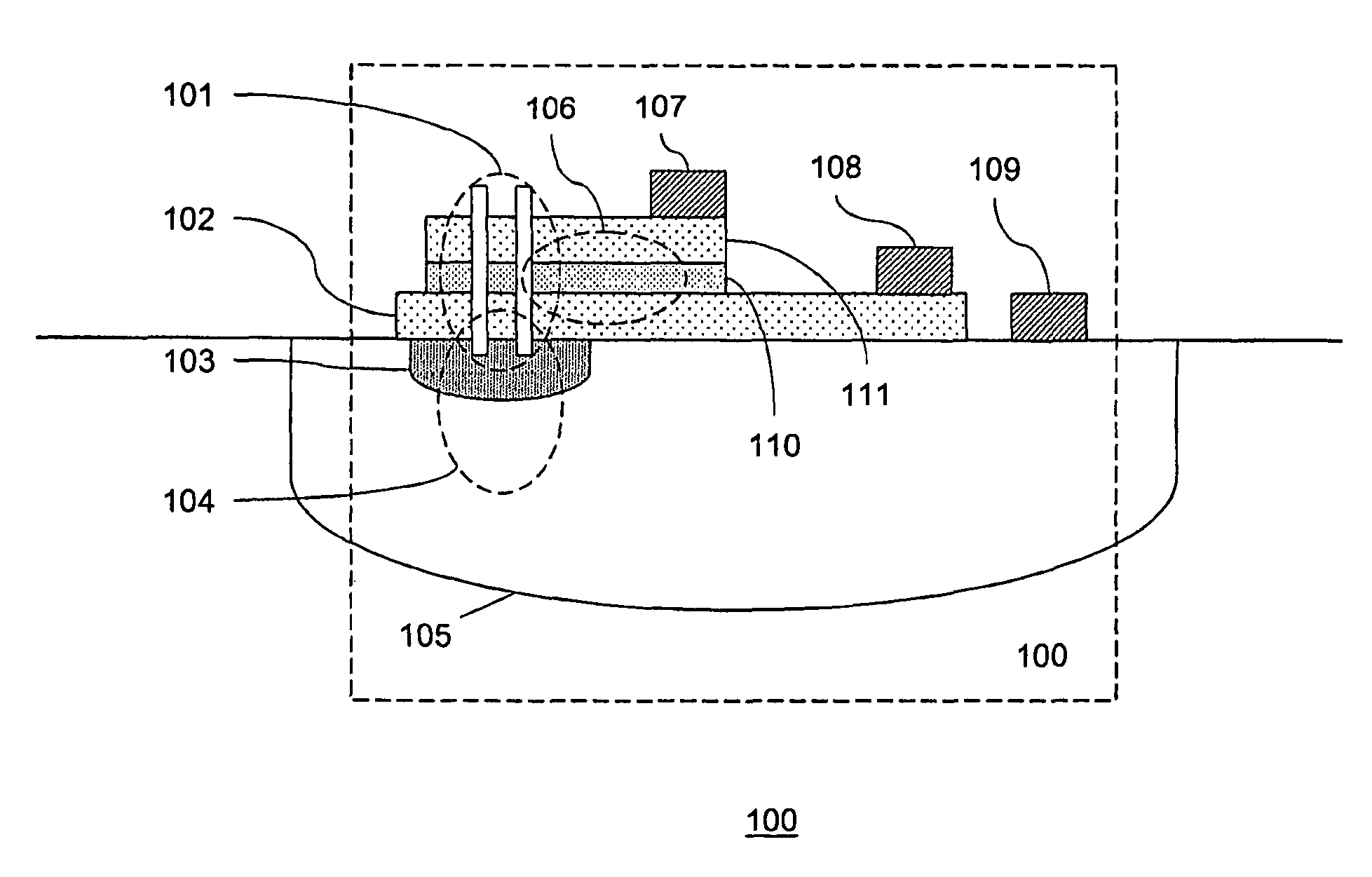Integrated plasmonic nanocavity sensing device
a sensing device and nanocavity technology, applied in fluorescence/phosphorescence, instruments, laboratory glassware, etc., can solve the problems of limited dimensions of sensors, less attractive integration with silicon based electronic components, and constraints
- Summary
- Abstract
- Description
- Claims
- Application Information
AI Technical Summary
Benefits of technology
Problems solved by technology
Method used
Image
Examples
Embodiment Construction
[0027]FIG. 1 is a schematic diagram showing a cross section of an integrated plasmonic sensing device 100 according to one embodiment of the invention. The integrated device may comprise a plasmonic nanocavity resonator 101, i.e. a sub-micron sized cavity configured for supporting localized resonant plasmonic modes inside the cavity, combined with an integrated optical source 106 and an integrated detector 104. In this non-limiting example, the resonant cavity 101 may be driven by the optical source 106, in particular guided surface plasmons generated by said optical source. To that end, the optical source 106 may comprise a conductive top and bottom layers 111, 102 forming the electrical contacts of the source. The conductive layers may relate to thin-film metal layers, in particular low-resistance thin-film metal layers, such as aluminum, copper, silver or gold having thickness within the range between 5 and 500 nm. In the example of FIG. 1 the conductive top layer may relate to a...
PUM
| Property | Measurement | Unit |
|---|---|---|
| wavelengths | aaaaa | aaaaa |
| wavelengths | aaaaa | aaaaa |
| thickness | aaaaa | aaaaa |
Abstract
Description
Claims
Application Information
 Login to View More
Login to View More - R&D
- Intellectual Property
- Life Sciences
- Materials
- Tech Scout
- Unparalleled Data Quality
- Higher Quality Content
- 60% Fewer Hallucinations
Browse by: Latest US Patents, China's latest patents, Technical Efficacy Thesaurus, Application Domain, Technology Topic, Popular Technical Reports.
© 2025 PatSnap. All rights reserved.Legal|Privacy policy|Modern Slavery Act Transparency Statement|Sitemap|About US| Contact US: help@patsnap.com



